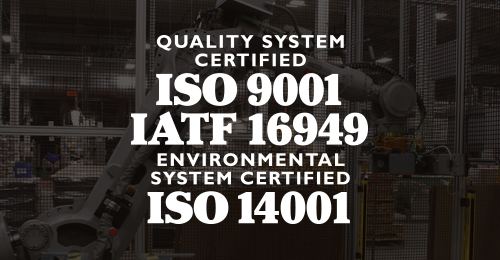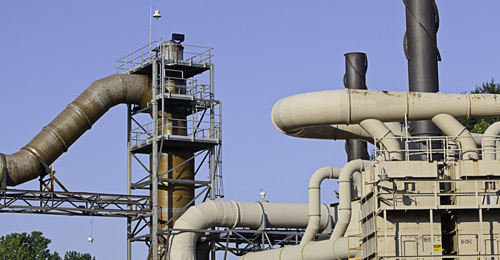Does Your Battery Powered Lift Truck Fleet Feel The Need For Speed?
These steps will help you optimize your fleet, save time and money, and be in the best position to succeed.
Warehouses, whether wholly owned or 3PL’s, are constantly getting measured for success on productivity. How many pallets can you move per hour? That’s a lot of pressure. While lift trucks can only move so fast safely, questions arise to where else to look for efficiencies. While there are many options out there both from the employee and equipment side, one key item that is looked at more and more is batteries. At a basic level, a forklift battery is a big energy storage box, similar to a fuel tank. The key questions are, how fast and efficiently can you use and refill that energy, and at what cost? While speed is good, it is absolutely critical to match the power you want, with the productivity you need, while maintaining the safety of your operations. And that should be based on a solid analysis of your facility and individualized power need.
Step 1: DETERMINE YOUR NEED
Going the fastest isn’t for everyone. Critical factors to consider include application, budgets, current equipment capabilities, employee practices and your current and future facility needs. Find a battery partner that will work with you to perform a detailed and technical Power Study to analyze your existing fleet and productivity demands. Those results will provide the perfect snapshot for your facility.
Step 2: LEARN CHARGING METHODS
The type of charging depends on the amount of power needed. A way to measure that is by Equivalent Battery Unit (EBU). An Equivalent Battery Unity (EBU) is defined as a battery’s maximum allowable daily discharge based on its overall capacity.
CONVENTIONAL CHARGING:
For decades, lead forklift batteries were used in a standard fashion. At the end of each shift, the forklift operator would take his truck to the battery changing room, remove the battery with the change-out equipment and put it into a rack for charging and storage. Before they would return in the morning, the battery would charge for 8 hours and rest for 8 hours. This is called “Conventional Charging”. In the morning the operator would put the freshly charged battery back in their truck. This change-out also took place if a battery received a weak charge or no charge from the night before. These change-outs required dedicated space in a battery room and personnel specifically trained to perform the task.
POWER NOTE: Conventional charging is recommended for facilities using lead batteries at 1 EBU per day.
OPPORTUNITY CHARGING:
Opportunity charging is an alternative to conventional and charges the battery at a higher rate, allowing the battery to charge quicker. It also allows the battery to remain in the truck longer as chargers can be strategically located throughout the warehouse, allowing lift truck operators to plug in during breaks and lunches, shift changes, and idle times for a “quick fill”. Opportunity charging is a practice that can be easily adopted with standard lead batteries. POWER NOTE: Opportunity charging is recommended for facilities using lead batteries at 1 – 1.25 EBU per day.
FAST CHARGING:
This is for the fastest charging speed, as fast charging is at an even higher rate than Opportunity Charging. So much so that the levels of energy introduced into the battery require additional features to handle the large amount of current. Some of these features include double charging cables, vented trays, and heavy duty intercell connectors. If determined that Fast Charging is right for you, it is critical to the product performance and safety to use a battery that was designed for Fast Charged applications. You do not want to introduce the amount of current from a Fast Charger into a conventional battery. Similar to Opportunity Charging, Fast Charging allows the battery to remain in the truck as chargers can be strategically located throughout the warehouse, allowing lift truck operators to plug in during breaks and lunches, shift changes, and idle times for a “quick fill”. POWER NOTE: Fast charging is recommended for facilities using lead batteries at 1.25 – 1.6 EBU per day.
*A note about additional technologies: Lithium-iron phosphate batteries, which are used for the highest power needs (≥1.6 EBU’s), are always charged at a high rate of current, very similar to fast charging methods, allowing for remote charging stations, and charging on demand practices.
Step 3: FINDING BALANCE – THE AFFECT OF SPEED ON LIFE
An important thing to remember is speed is great if it fits your need – but it has an impact. A good way to understand your lead battery is like a gas tank. The faster you go the greater amount of gas you use. With a battery, you are taking out varying levels of energy. The speed with which you take that energy out then put it back in affects its calendar life. The more you take it out, the less calendar life overall. For example, if you take a Honda Accord and drive 55 mph you will attain a certain MPG figure. If you drive the same vehicle at 100 MPH, you might get there a lot faster, but your MPG efficiency will be much less before you need to fill up. And over time, this increased demand on your car will start to affect other parts that need to be maintained and replaced. Overall, it will shorten the life of your vehicle compared to one that was used in a less intense way.
Step 4: FIND A PARTNER THAT KNOWS CHARGERS
There is a lot of information about the use of various types of chargers. Here is a breakdown of the main chargers types, their attributes and challenges. It is important to work with the right partner to set you up with the right charging solution for the right speed of your operation. SCR – Silicon control rectifier – Robust, proven technology. Allows maximum flexibility but is less energy efficient than HF or Ferroresonant chargers. Able to handle AC voltage fluctuations and restarts. Can be used to charge batteries for the following methods: Conventional, opportunity, and fast including flooded and gel technologies. Ferroresonant. Robust, proven technology. Primarily used for conventional charging. Over 40 models built with minimal output adjustments, less adjustment than the SCR. Able to handle AC voltage fluctuations and restarts Greater energy efficiency than the SCR. Very application specific. HF: High frequency. While the technology has been around for some time, it is newer to the Lift Truck industry. Offered in both traditional power engines and modular options for ease of service and replacement. Can be used to charge batteries for the following methods: Conventional, opportunity, and fast including flooded and gel technologies. Also used for lithium-iron phosphate technology. Although less robust than the SCR and Ferrorescenant, it offers maximum flexibility of the charger settings.
GET UP TO SPEED:
Before making any changes, and to get the most from your battery and charger fleet, find a partner that has multiple technology and product experience to assist with those needs. The right partner will walk you through these four sensible steps and help you evaluate the best fit for your operations long term success.
E-mail: motivepowersales@dekabatteries.com
Phone: 610.682.3260

